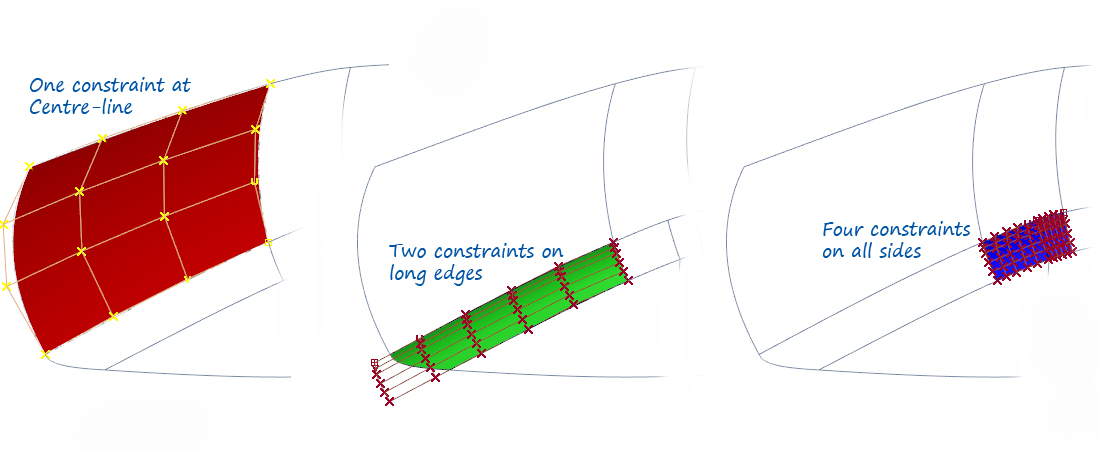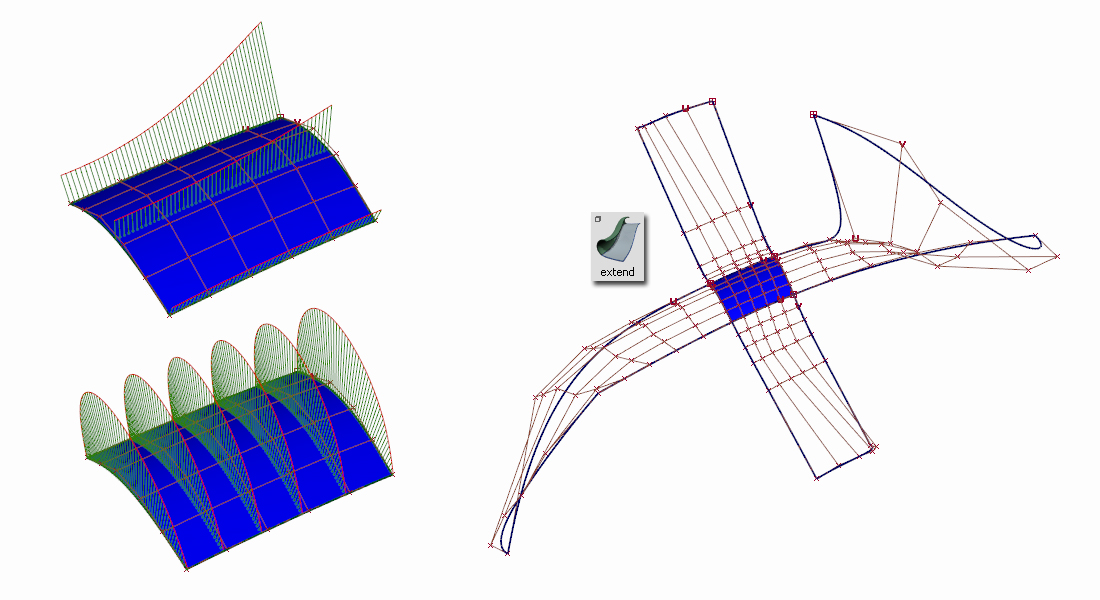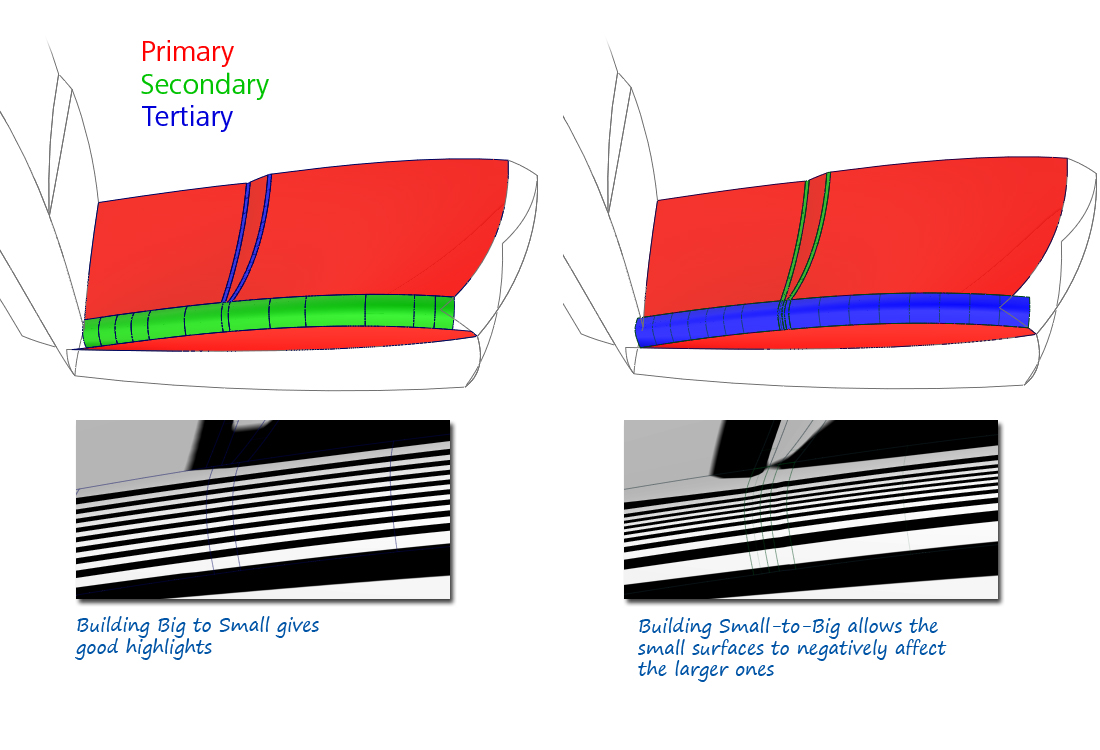GR5 Work Big to Small Further Information...
Less work means less 'stress' on a surface
The Primary surfaces (red) may have few or no edge constraints and so you are free to create a good flow of CVs. The surface has less work to do and so the CVs should be more 'relaxed', i'e' have a calm curvature plot.
The Secondary surfaces (green) would typically have continuity constraints on 2 of the 4 sides. This moderate amount of work will have some influence upon the flow of CVs and typically require more CVs and spans to satisfy the constraints.
The Tertiary surfaces (blue) would have continuity constraints on all 4 sides, meaning that they will have to work hard (more CVs) to achieve them, and the extra 'work' creates more extreme curvature.

Understanding the Curvature in Small Blend Surfaces
One way to understand the problem with working 'small to big' is to look at the extreme curvature that can exist in a smal blend surface.
Using the Object Edit → Extend tool with the Merge option set to off is a good way to illustrate the inherent curvature that the small surface would impart to any surface aligning to it.

Examples
In the seat example below, the effect of allowing the smaller surfaces to influence the larger is clearly visible in the highlights.

Modelling to 'Theoreticals' is another example of working Big to Small. You start with the large 'slab' surfaces (primaries) and then work on the fillets and blends (secondary surfaces). See Golden Rule 6 for examples